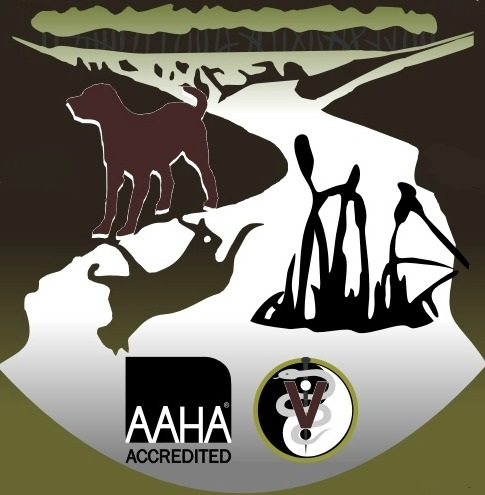Physiotherapy and Rehabilitation to Strengthen Your Pet’s Body
Dr Julie Schell BSc(Hons), DVM, CVA, ACVCHM, CVC
www.bowbottomvet.com
Since joint health is highly dependent on strong muscles and nerves, it is important to help keep your pet strong and fit throughout their whole life. This will help to improve their comfort, mobility, and decrease pain and injuries.
Pets need to develop their strength back after injuries, surgeries or periods of inactivity such as ‘snow days’ and cold conditions that may prevent them from having proper levels of outdoor exercise. These are options on how to help pets, indoors and outdoors.
Your veterinarian, if certified, can give or prescribe your pet these treatments:
- Acupuncture, chiropractic, therapeutic massage
- Herbal Medicine- items such as Turmeric, and other Traditional Chinese herbs
- Moxibustion- an ancient Chinese therapy which involves holding a smoldering herb above acupuncture points: https://www.youtube.com/watch?v=B1CncH6HfWw&t=1s
Your veterinarian can prescribe a Moxa stick and train you how to perform Moxibustion on your pet
- Advise the best nutrition for your pet’s needs. This may include a prescription diet or a home cooked diet that you can make at home with proper supplements.
For example: - Essential oil therapy: https://www.youtube.com/watch?v=J_BC649tRP8&t=53s
https://www.youtube.com/watch?v=Jlv2rNfbtjI&t=17s
https://www.youtube.com/watch?v=sNI9BjG_flg&t=31s
- Pain control medication, if needed.
- Underwater treadmills at a proper veterinary rehabilitation centre are great for providing non-slip resistance to build strength and balance.
This is a list of exercises and treatments you can give your pet at home for building strength and improving healing:
- Passive Range of Motion exercises to improve circulation: https://www.youtube.com/watch?v=EXz5S0_Y22w&t=41s
- Massage small breed dogs: https://www.youtube.com/watch?v=KMHIFBDTb9c&t=13s
Massage large breed dogs:
https://www.youtube.com/watch?v=-Zim3PgYEAE&t=62s
Massage cats:
https://www.youtube.com/watch?v=QaD7j7XtSMs&t=90s
- Gentle walks uphill. Hill ‘climbs’ are excellent for encouraging weight transfer to the hind legs. Slowly work up to allow 3 to 5 minutes of walks up inclines two or three times daily depending on your pet’s stamina. You can find gentle hills and inclines in many neighborhoods. The pitch of the hill does not need to be very steep, just enough to encourage weight transfer to the hind end.
- Treadmill- dry land—if you own a treadmill, many dogs and even cats can be trained. Treadmills can provide a gentle incline. Slow and steady training with positive reinforcement helps.
- Encourage your dog to walk through tall grass- this encourages them to lift their feet high while walking and also to use proper balancing muscles and proprioception.
- In winter, walk your dog through slightly deep snow (not too deep and ensure it is not icy or slippery). It is important to have good traction at all times.
- Swimming in a safe, current-less pond, while wearing a pet life jacket. Supervision at all times is vital. Many dogs and some cats like swimming and it helps decrease weight and pressure on joints.
- Cavelettis (tiny ‘horse jumps’) work well to improve your pet’s proprioception (leg, body, mind coordination) and balance. You can use foam cylindrical rollers or broomsticks placed down your hallway parallel in tandem. Ask your pet to walk down that hallway. They will have to lift their feet up higher than usual to clear the cavelettis.
- “Cookie Stretches”. Have your dog lie down on their side, then hold a tasty (small piece) of a treat against their chest so the dog has to lift and turn his/her head to grasp the treat. This can also be done while your dog or cat are sitting or standing as well. It helps gently extend their leg, neck and back joints. Gradually work your pet 10 reps each side twice daily.
- Have your pet stand on a non-slip mat (such a carpet runner or yoga mat). Then gently push the left hip slightly to the right encourage them to transfer weight to the right leg, and vice versa. Repeat 10 times daily. Be slow and steady
- Life up one paw at a time (ensure you do all 4) while standing up. This improves balance muscles and also strength. Hold for 30s to 60s each leg.
- Ask your dog to put both front legs up onto an exercise ball. They will have to use balance muscles of the hind legs to keep standing. This takes time and patience. Some small dogs need a much smaller ball than others.
- Ask your dog to step into an open cardboard box. Not too high though. Less than 1 foot tall. By stepping in and out of a raised box your dog has to extend his legs and balance well.
- Keep your pet’s nails trimmed as short as possible without making them bleed. Short nails prevent over extension and they improve traction.
- Moxibustion.
- Train your pet to give a ‘High Five’, or even ‘Sit Pretty’. The act of raising one paw while sitting (High Five) or rising up both paws at the same time (Sit Pretty) helps flex abdominal muscles as well as arm muscles.
- When strong enough you can ask the pet to go from standing to sitting to lying down, then back to sitting, then standing.
It is important that the physiotherapy program suits your pet’s needs. The program should be challenging but not overwhelming. Ideally it should be an enjoyable way for you and your pet to spend quality time together. Work with your veterinarian to develop a plan optimal for your pet.
For more information contact us at www.bowbottomvet.com


